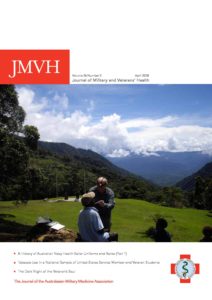Gulf War Illness in the 1991 Gulf War and Gulf Era Veteran Population: An Application of the Centers for Disease Control and Prevention and Kansas Case Definitions to Historical Data
E Dursa, S Barth, B Porter, A Schneiderman Introduction In the initial years following the 1990–1991 Gulf War, reports of a complex array of medically unexplained symptoms began to emerge among US Gulf War veterans.1,2 This cluster of symptoms, which included fatigue, pain, gastrointestinal symptoms, respiratory symptoms, dermatological symptoms, neurological symptoms and cognitive symptoms,3-9 collectively… Read more »




 Download the whole edition here.
Download the whole edition here.


